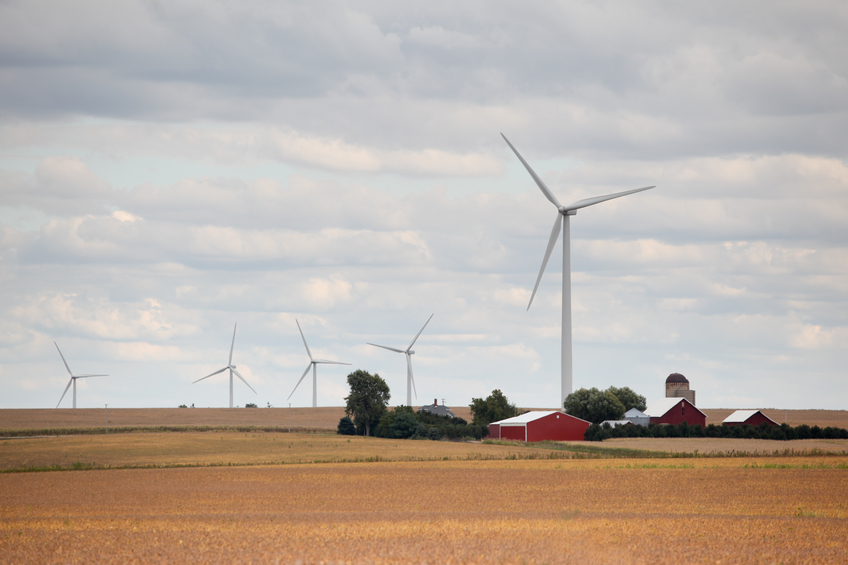The latest phase in Texas' competitive renewable energy zone (CREZ) initiative has revealed a proposal that could help the state address a need for more generation capacity identified by the North American Electric Reliability Council last October and also achieve a renewables goal of 10,000 MW by 2025.
   Pursuant to Public Utility Commission of Texas (PUCT) Substantive Rule (S.R.) 25.174, 15 intervenors filed CREZ nominations with the PUCT on Feb. 15. Included in the filings was a nomination for a CREZ in Texas' panhandle that proposes development of an 800-mile, 345 kV transmission loop in that zone. Dubbed the Panhandle Loop, the project was the only complete transmission proposal to be submitted to the PUCT with the nominations.
   S.R. 25.174 allowed entities to nominate any region in Texas for CREZ status as long as a nominated area offers substantive wind-powered generation potential and cost-effective transmission of energy from the zone to end users. All 15 filings named at least one of the regions studied in the Electric Reliability Council of Texas (ERCOT) December 2006 report "Analysis of Transmission Alternatives for Competitive Renewable Energy Zones in Texas." Seven of the filers nominated the panhandle, five nominated the McCamey area and six nominated central-western Texas.
   These nominations were the first "action step" in the CREZ procedure established under 25.174, says Pat Wood, former chairman of both the PUCT and the Federal Energy Regulatory Commission as well as chairman of the North American advisory board for Airtricity Inc., one of the five entities behind the Panhandle Loop proposal.
   The commission has a six-month window, which started at the beginning of the year and ends July 4, to determine where it wants transmission built and which areas will be designated as CREZs, Wood adds. Ongoing proceedings will provide an opportunity for wind developers to demonstrate to the PUCT any financial commitments they have made in nominated CREZs.
   Filed by Sharyland Utilities LP and backed by Airtricity, Babcock & Brown Renewable Holdings Inc., Celanese Ltd. and Occidental Energy Ventures Corp., the Panhandle Loop proposal presents an option to tie 4,200 MW of potential wind power in the panhandle to the ERCOT grid, and to deliver energy reliability through both a diverse generation mix and a loop structure.
   The group backing the loop proposal says the transmission system will provide open access for new generation, and its looped design will bring additional stability to the grid. The system would include three interconnected transmission lines that extend from three separate points in the ERCOT grid. Under this format, two lines can continue delivering power from the panhandle to the ERCOT grid should one line become disabled.
   The Panhandle Loop filing notes that "unlike CREZ proposals that confine their focus to wind generation, [this] project is comprehensively designed to provide ERCOT with access not only to wind resources, but also to base-load coal and controllable-dispatch natural gas resources."
   The generation mix would include the aforementioned 4,200 MW of wind power – 2,800 of which is slated for development by Airtricity and Babcock & Brown – as well as a potential 2,000 MW of gas-fired power and 1,800 MW of coal-fired power developed by Occidental Energy and Celanese, respectively.
   "The project's resource diversity ensures significantly higher load factors and lower costs per kW and per kWh than other proposals which rely solely on wind generation," the filers conclude.
   If the PUCT designates the panhandle as a CREZ and approves the Panhandle Loop proposal in July, the project could begin delivering power by the end of 2010.
   "We gave ourselves nine months to perform the siting and preparation work, and then we go back to the commission for a six-month proceeding for a certificate of convenience and necessity to build the transmission," says Wood. "At that point, we would have about a 24-month construction window. That is very aggressive for transmission, but 95 percent of the system is over existing transmission and natural gas, telephone, and Texas and U.S. highway corridors."
   Wood hopes the decision to base the system mostly on rights of way will expedite development.
   The cost for the project is estimated at $1.5 billion, for which the Panhandle Loop supporters would have to provide a 10% down payment in letters of credit proportionate to their shares, says Wood. However, the total cost for the Panhandle Loop, he adds, would be recovered over 30 years through normal transmission rates paid in Texas.
© Copyright Zackin Publications Inc. All Rights Reserved.



